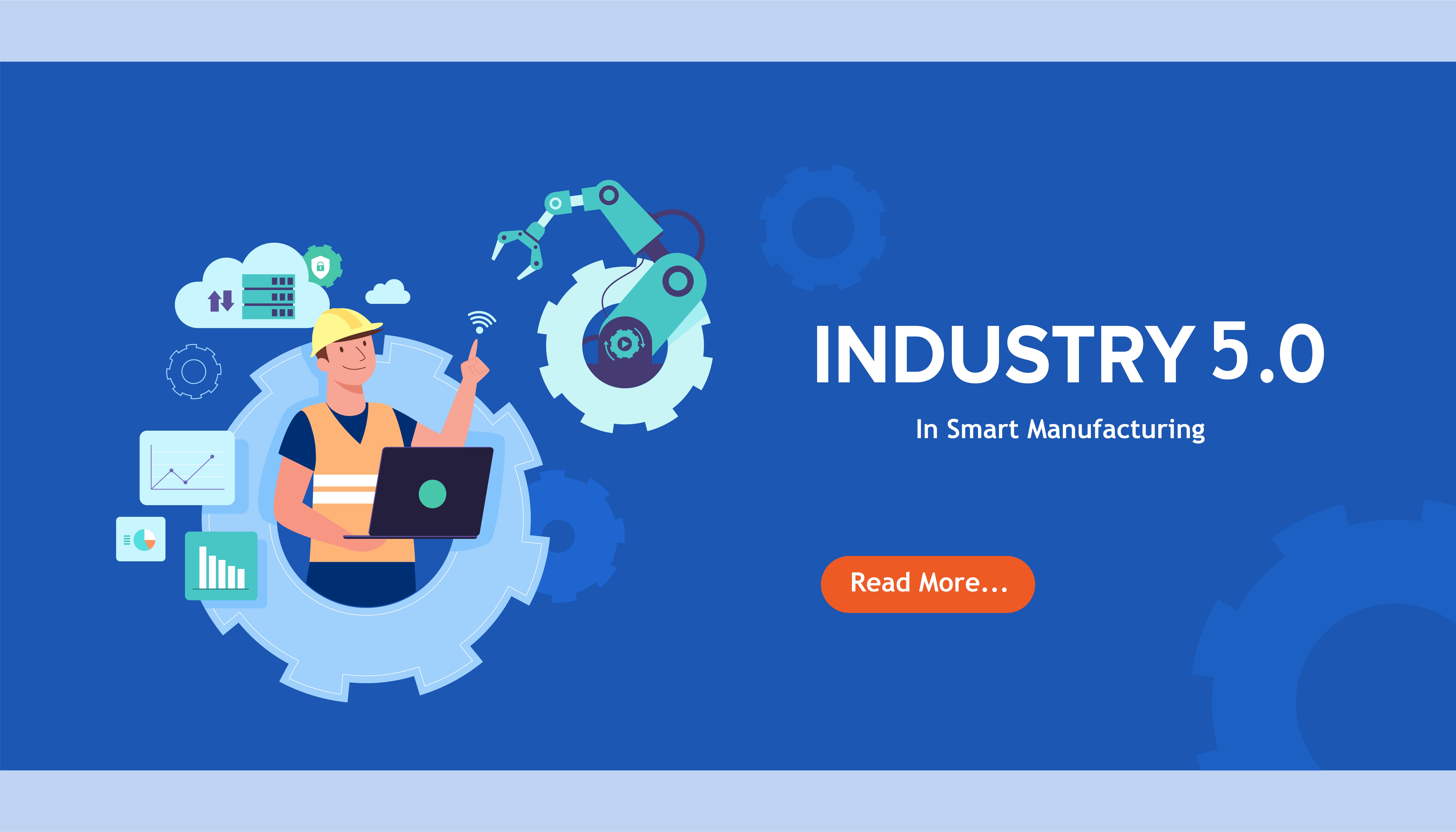Industry 5.0: Leveraging Smart Manufacturing, AI, and IoT for Business Success

27 Jul
2023
In today's rapidly evolving business landscape, staying ahead of the competition requires embracing technological advancements that can drive growth and efficiency. The convergence of smart manufacturing, artificial intelligence (AI), and the Internet of Things (IoT) has given rise to Industry 5.0, presenting businesses with unparalleled opportunities to revolutionize their operations and achieve new levels of success. Industry 5.0 offers a multitude of benefits that can transform the way companies operate and thrive in a hyper-connected world.
Enhancing Production Efficiency
One of the key drivers of Industry 5.0 is the seamless integration of AI and IoT in manufacturing processes. These technologies enable real-time data collection, analysis, and interpretation, empowering businesses to optimize their production efficiency significantly. By leveraging AI algorithms, manufacturers can identify bottlenecks, streamline workflows, and automate repetitive tasks, leading to increased productivity and reduced operational costs. Smart manufacturing solutions can also provide predictive insights, enabling proactive decision-making to minimize downtime and maximize resource utilization.
As per a new report published by Allied Market Research, the smart manufacturing market is deemed to set forth an impressive CAGR from 2022 to 2031.
Empowering Data-Driven Decision Making
In the era of Industry 5.0, data is the lifeblood of success. AI and IoT generate vast amounts of valuable data throughout the manufacturing lifecycle, from supply chain management to production and post-sale customer insights. Businesses can harness this data to gain comprehensive visibility into their operations, market trends, and customer behavior. Analyzing this data allows companies to make informed, data-driven decisions that drive innovation, identify new revenue streams, and optimize product offerings according to customer preferences.
Ensuring Quality and Compliance
Manufacturers across industries face the challenge of maintaining consistent product quality while adhering to stringent regulations and compliance standards. Industry 5.0 addresses this challenge with AI-driven quality control mechanisms and real-time monitoring of production processes. IoT sensors embedded in manufacturing equipment enable continuous data collection, helping identify anomalies and deviations from quality standards. This level of precision ensures that defects are detected and corrected early in the production cycle, reducing waste, product recalls, and potential legal liabilities.
Driving Customer-Centricity
In the age of Industry 5.0, customer expectations are higher than ever before. Businesses must prioritize customer-centricity to retain and attract loyal consumers. The combination of AI and IoT allows companies to offer personalized products and experiences to customers. Through data analysis, businesses can understand customer preferences, buying behavior, and pain points, tailoring products and services to meet individual needs. This level of personalization fosters stronger customer relationships, brand loyalty, and positive word-of-mouth, ultimately driving sustainable growth.
Enabling Supply Chain Optimization
A well-optimized supply chain is crucial for efficient operations and customer satisfaction. Industry 5.0 empowers businesses with real-time visibility into their supply chains through IoT-enabled tracking and monitoring systems. AI algorithms analyze supply chain data, enabling proactive risk management, inventory optimization, and demand forecasting. As a result, businesses can reduce lead times, lower carrying costs, and create a more agile and responsive supply chain network.
Unlocking New Business Models
The advent of Industry 5.0 brings forth new business models and revenue opportunities. IoT-enabled smart devices can provide valuable insights into product usage and performance. Companies can leverage this information to introduce subscription-based services, predictive maintenance contracts, and data-driven upgrades, enhancing customer retention and generating recurring revenue streams. Embracing such innovative business models can differentiate companies in the market and drive long-term profitability.
Summing up
To sum up, Industry 5.0 in smart manufacturing presents an array of opportunities for growth, efficiency, and competitiveness. Embracing AI and IoT allows companies to optimize production processes, make data-driven decisions, enhance customer experiences, and streamline supply chain operations. By adopting Industry 5.0 technologies, businesses can position themselves as industry leaders, setting new standards for innovation and customer-centricity. Those who embrace the transformative potential of Industry 5.0 will undoubtedly thrive in an increasingly interconnected and dynamic business environment.

Koyel Ghosh
Author’s Bio- Koyel Ghosh is a blogger with a strong passion and enjoys writing in miscellaneous domains, as she believes it lets her explore a wide variety of niches. She has an innate interest in creativity and enjoys experimenting with different writing styles. A writer who never stops imagining, she has been serving the corporate industry for the last five years.
Avenue: Entire Library membership of Allied Market Research Reports at your disposal
- Avenue is an innovative subscription-based online report database.
- Avail an online access to the entire library of syndicated reports on more than 2,000 niche industries and company profiles on more than 12,000 firms across 11 domains.
- A cost-effective model tailored for entrepreneurs, investors, and students & researchers at universities.
- Request customizations, suggest new reports, and avail analyst support as per your requirements.
- Get an access to the library of reports at any time from any device and anywhere.
Related Post
-
How are Submarine Cables Transforming Global Connectivity with Enhanced User Experience?
-
Endoscopy Procedures: Transformations in Techniques and Applications
-
AI-Powered Video Analytics: How the Product Actually Works for enterprises
-
Painting Robots: Transforming Precision Coating and Creative Applications
-
Innovations in Pharmacovigilance Systems Advancing Patient Safety
-
Understanding Edge Security: Keeping Data Safe Near the Source
-
Exploring the Use and Advancements of 3D Laser Scanners in Professional Applications
-
Reinforcing Industrial Controls with Smarter Tools and Training








